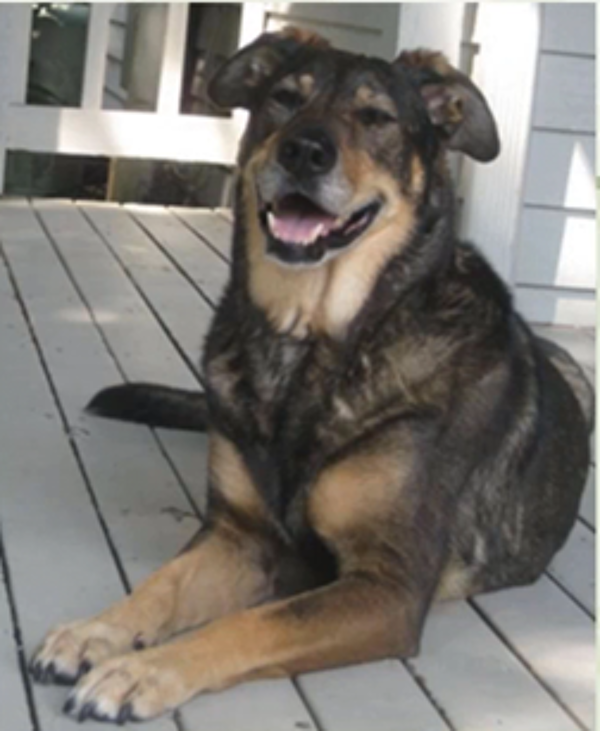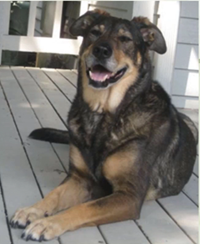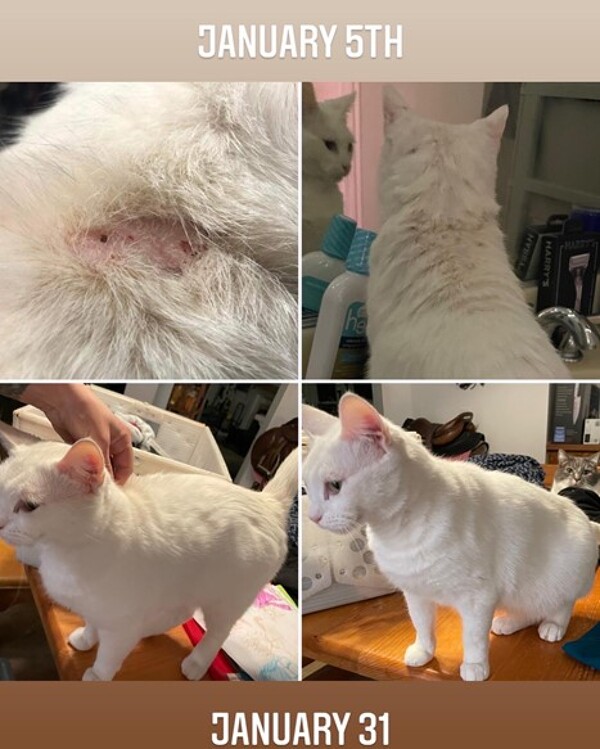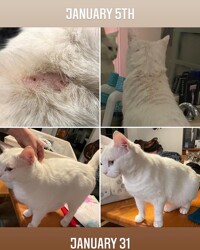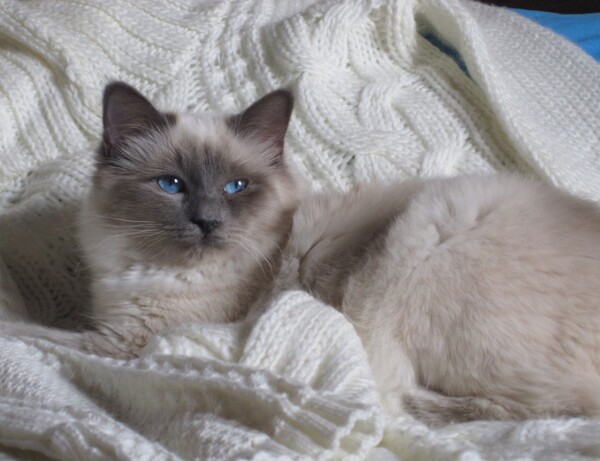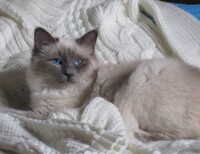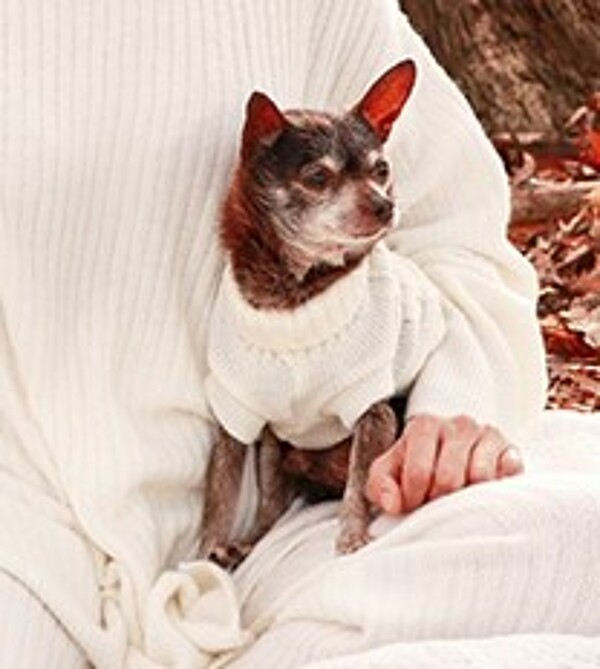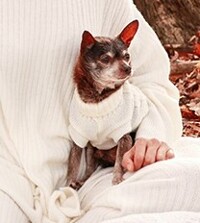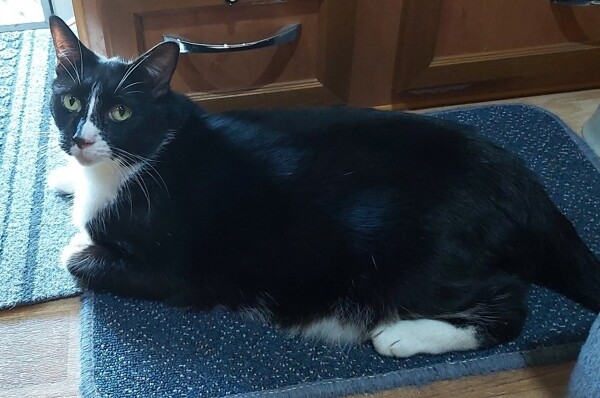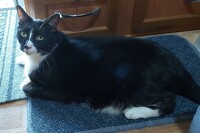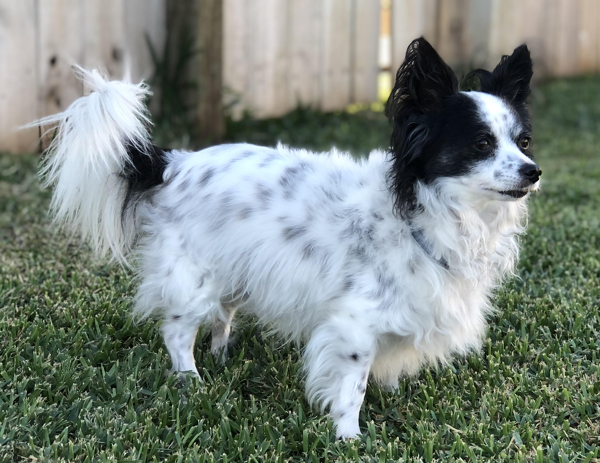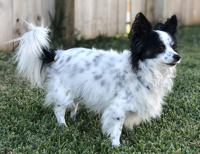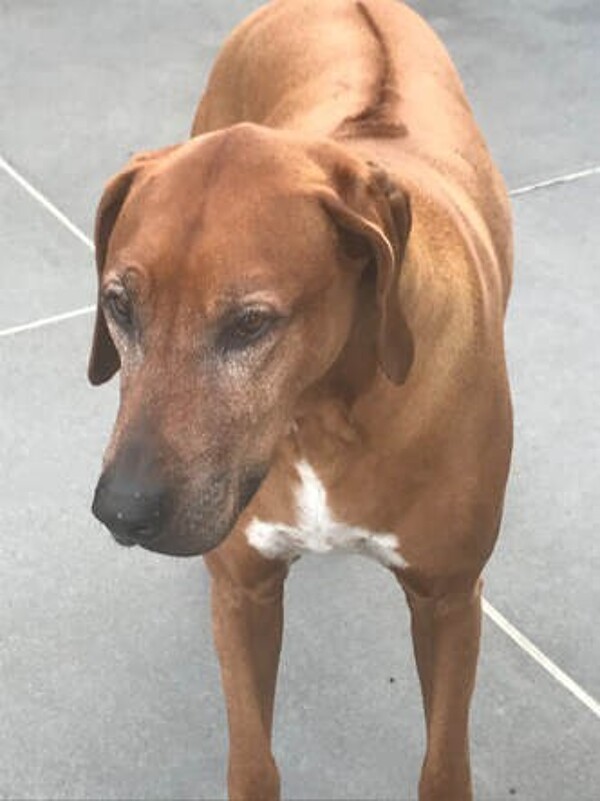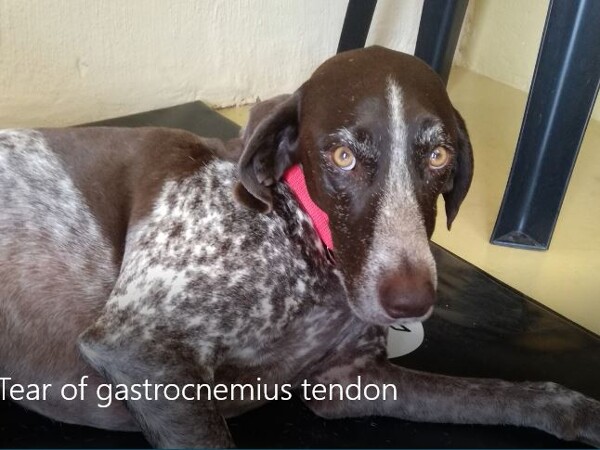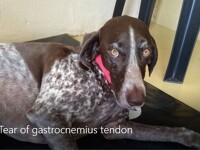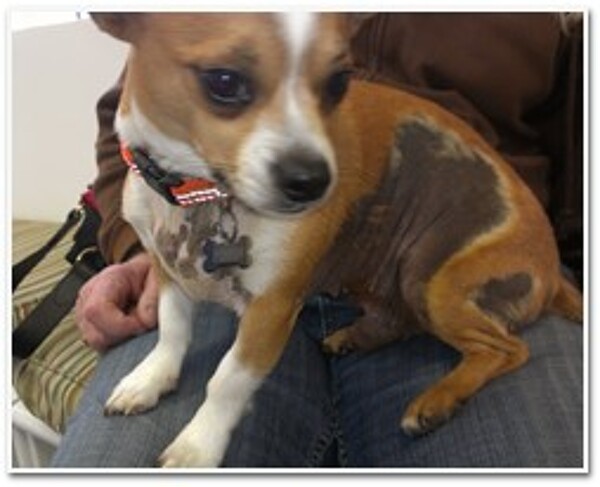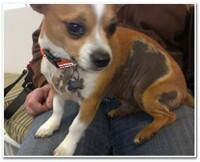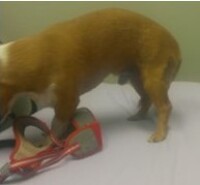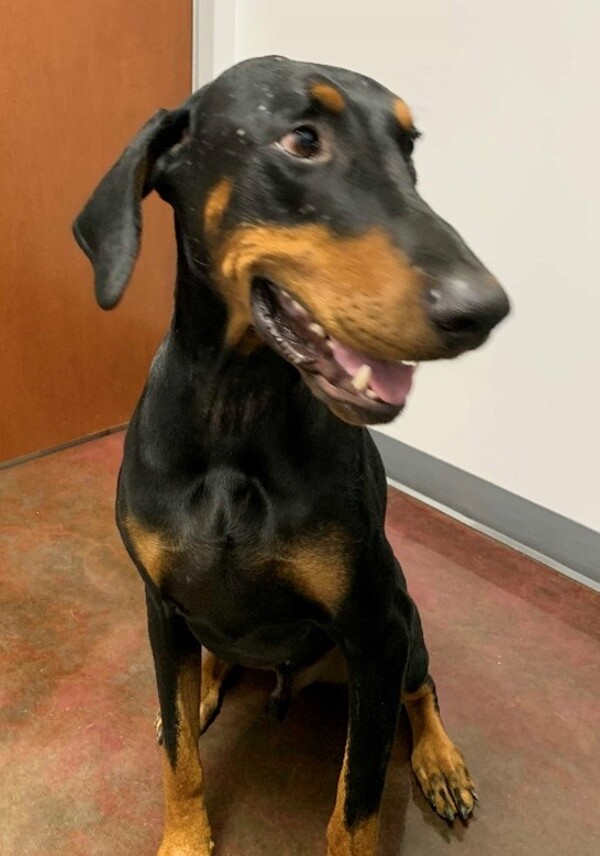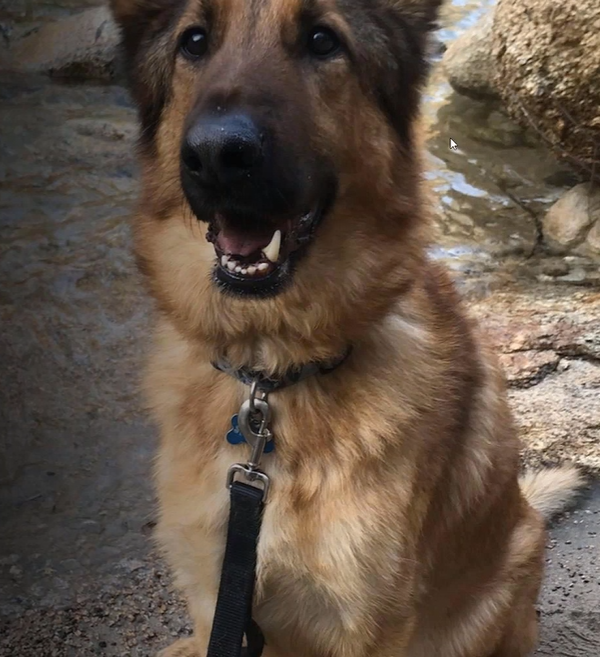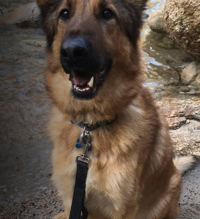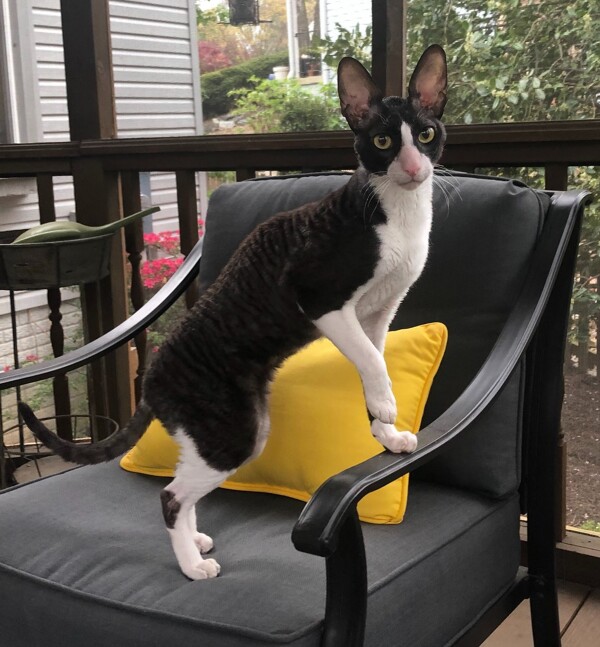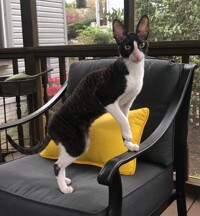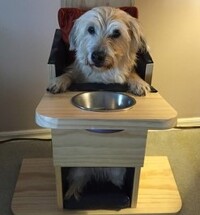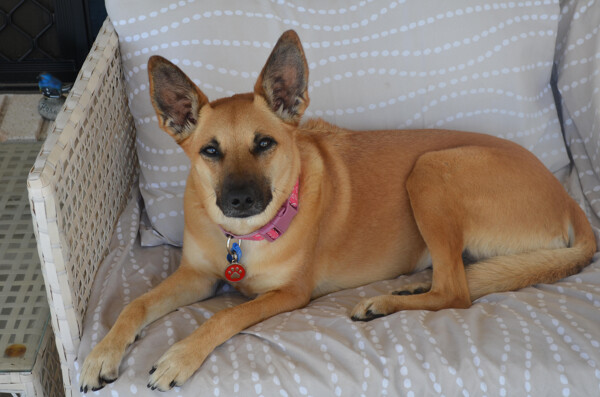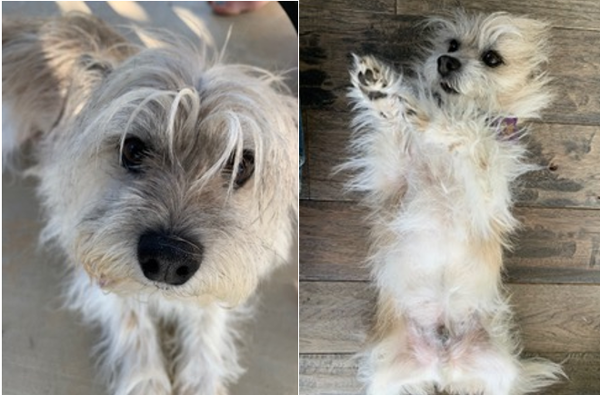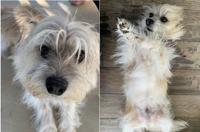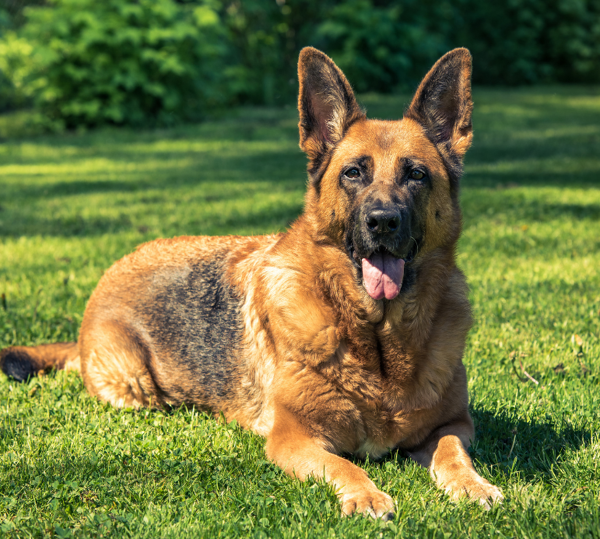Click the image to view the original image
Winston is a five year old male neutered Border Collie owned by a local harbor master in Chicago, USA.
History and PE
Winston was being fed a half cup of a dry kibble food twice a day and was significantly overweight. His owners considered the dry kibble food to be a "high-quality'' food. He was also given baked treats and occasionally raw bones to chew on, but not recently. He was given plenty of exercise and was able to go to work with his owner. He has a history of a hypothyroid condition managed by 0.8mg Levothyroxine with food, his levels had been tested three months prior to presentation. Overall, he was described as having decreased energy at home, decreased appetite and not playing anymore.
On presentation he weighed 92 pounds, his coat was dry with significant dandruff and his body condition score was 8/9. He had difficulty and was slow to get up from lying down and slow to go up and down stairs. He had 0-2/4 dental tartar and mild gingivitis and halitosis, a heart rate of 80 bpm and deep, slippery pulses.
After His Integrative Veterinary Consultation
Winston’s diet was changed to a high quality fresh raw food. It was recommended that he be fed once a day but his owner wanted to wait a few weeks before starting once a day feeding. They transitioned him over ten days to 8 ounces of fresh complete and balanced raw food twice a day. The raw food was low carbohydrate, with fat and protein percentages almost equal. Fresh raw bones to chew on were again provided. His dose of Levothyroxine was decreased to 0.4mg and given on an empty stomach twice daily. He was also given a quarter cup of fermented goat milk three times a week to improve his gut biome, sustainably sourced fish oil from pelagic fish (mackerel, sardines, anchovy) for omega 3 and a half teaspoon of sunflower oil twice a week for linolenic acid.
At a three week physical examination he had already lost 10 pounds. The owners commented that his energy, appetite, cheerfulness and interaction had improved dramatically, and he was "a different dog." His heart rate was 96 bpm, he was energetic, engaged, not slow to get up or down and he moved with alacrity in the room. His coat was shiny and lustrous with no dandruff. His eyes were bright, his teeth and gum condition had already improved significantly. The owners and many people at the harbor club commented that he seemed like a much older dog before the dietary changes. After his transition they stated that he seemed to be younger and more engaged. He is overwhelmingly excited by his food, eating enthusiastically. In addition, his stools and intestinal gas were significantly improved as well – smaller, firmer and easier to pick up faeces, and less frequent defecation (once a day, normal for a canine) and much less flatulence.
The short turnaround in his condition was noted by all who know Winston and his improvements continue at the time of this writing (four weeks after initial consult) and are impressive. His thyroid regulation will be checked in two weeks. It is anticipated that it all will be well as his physical condition is so good.








